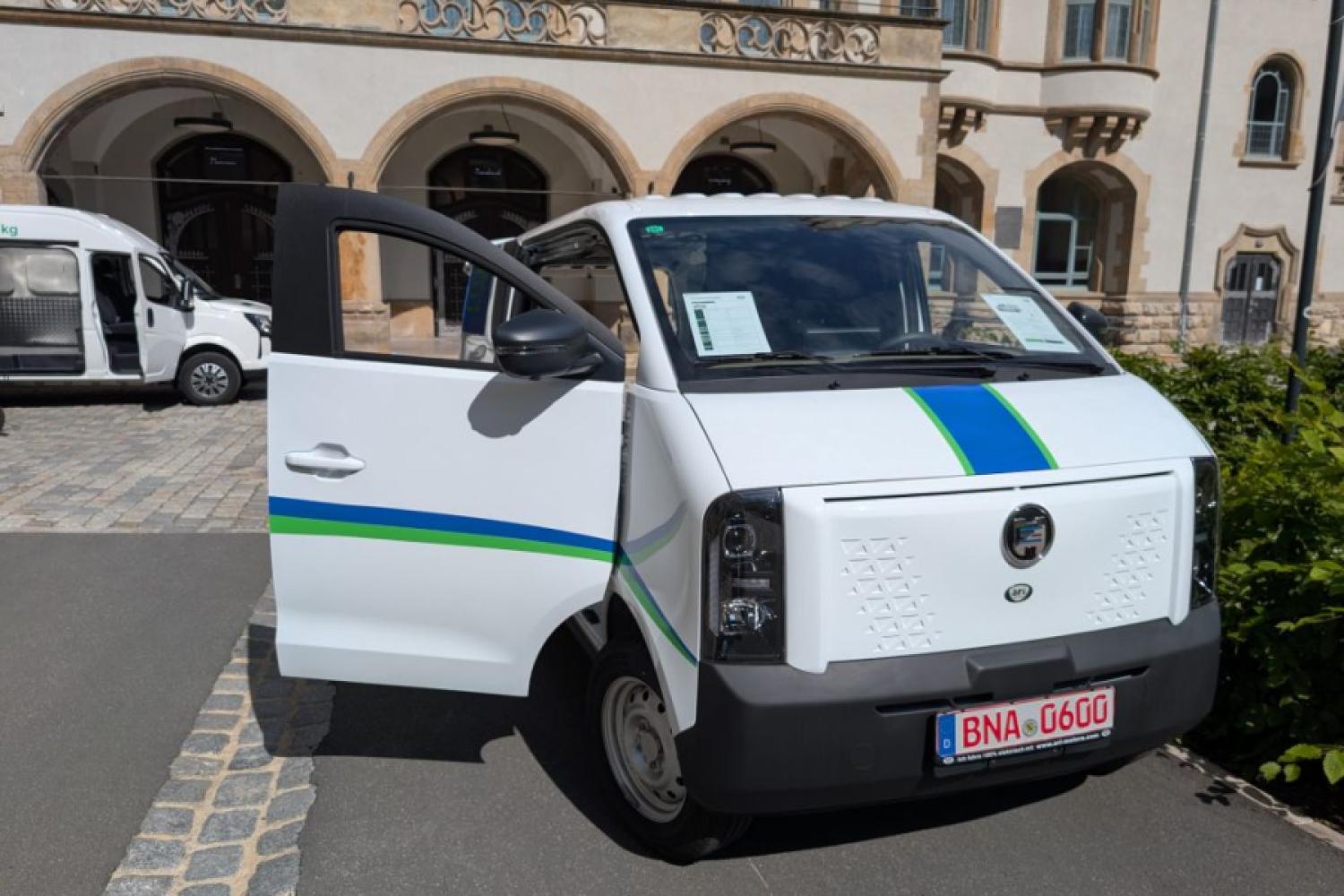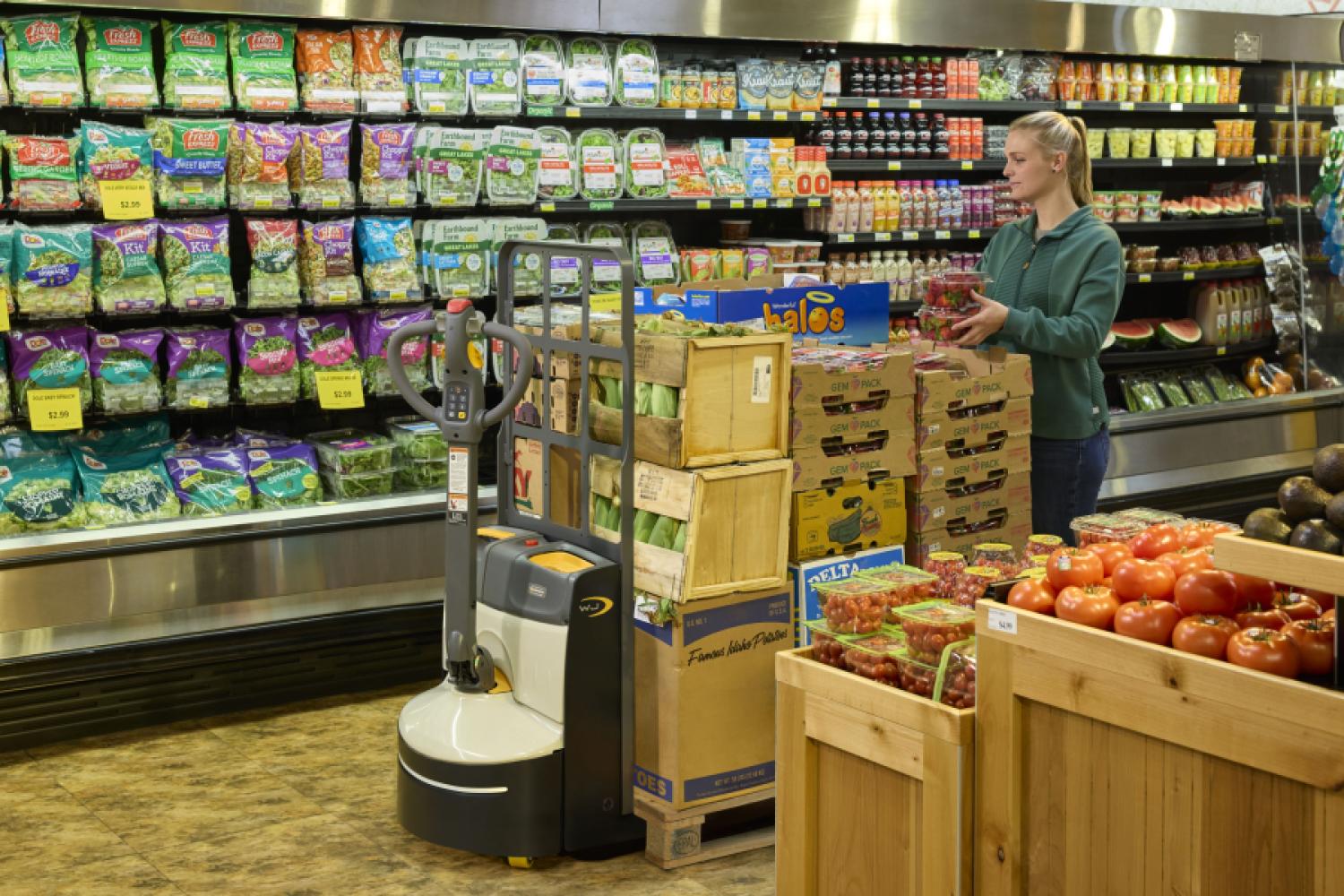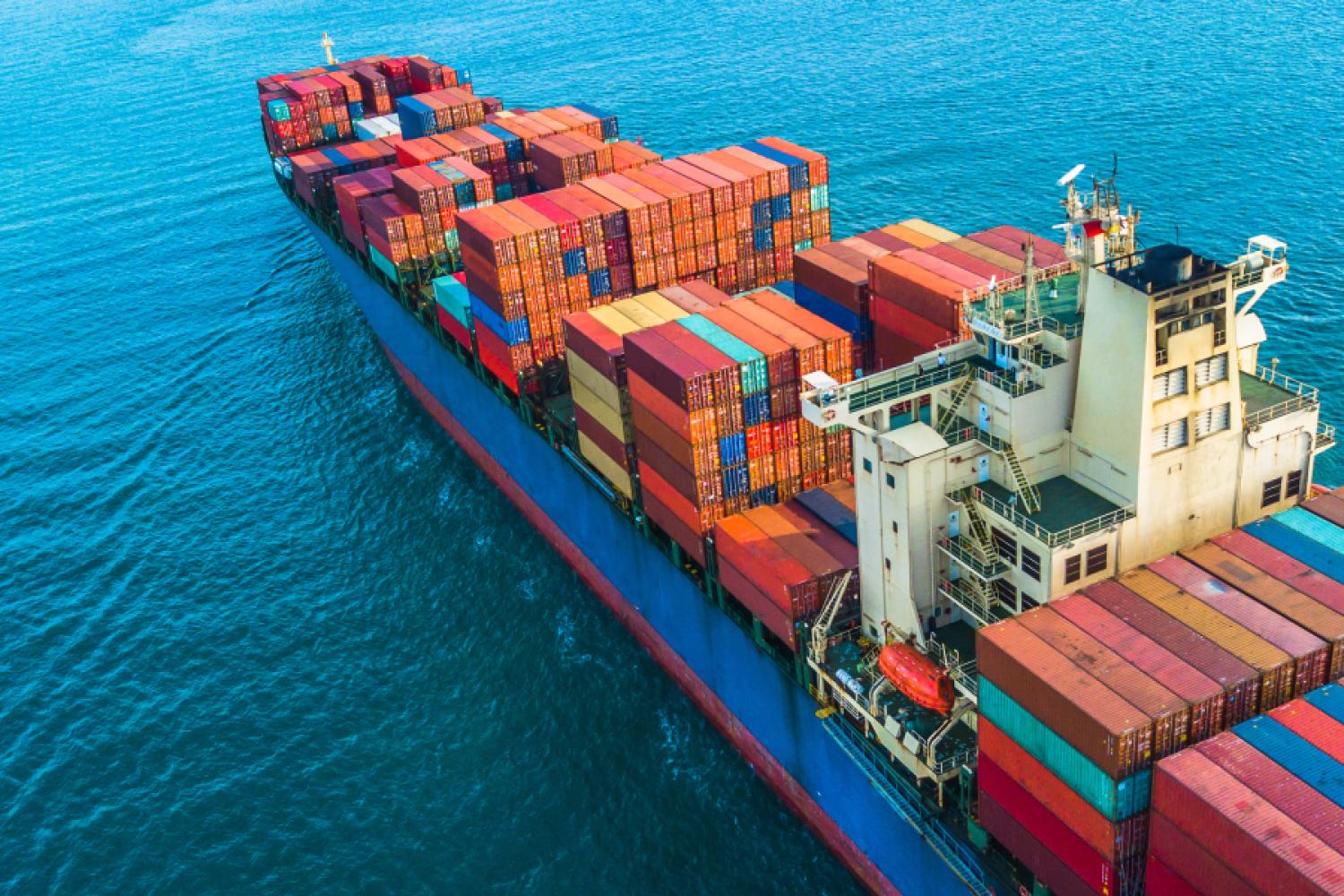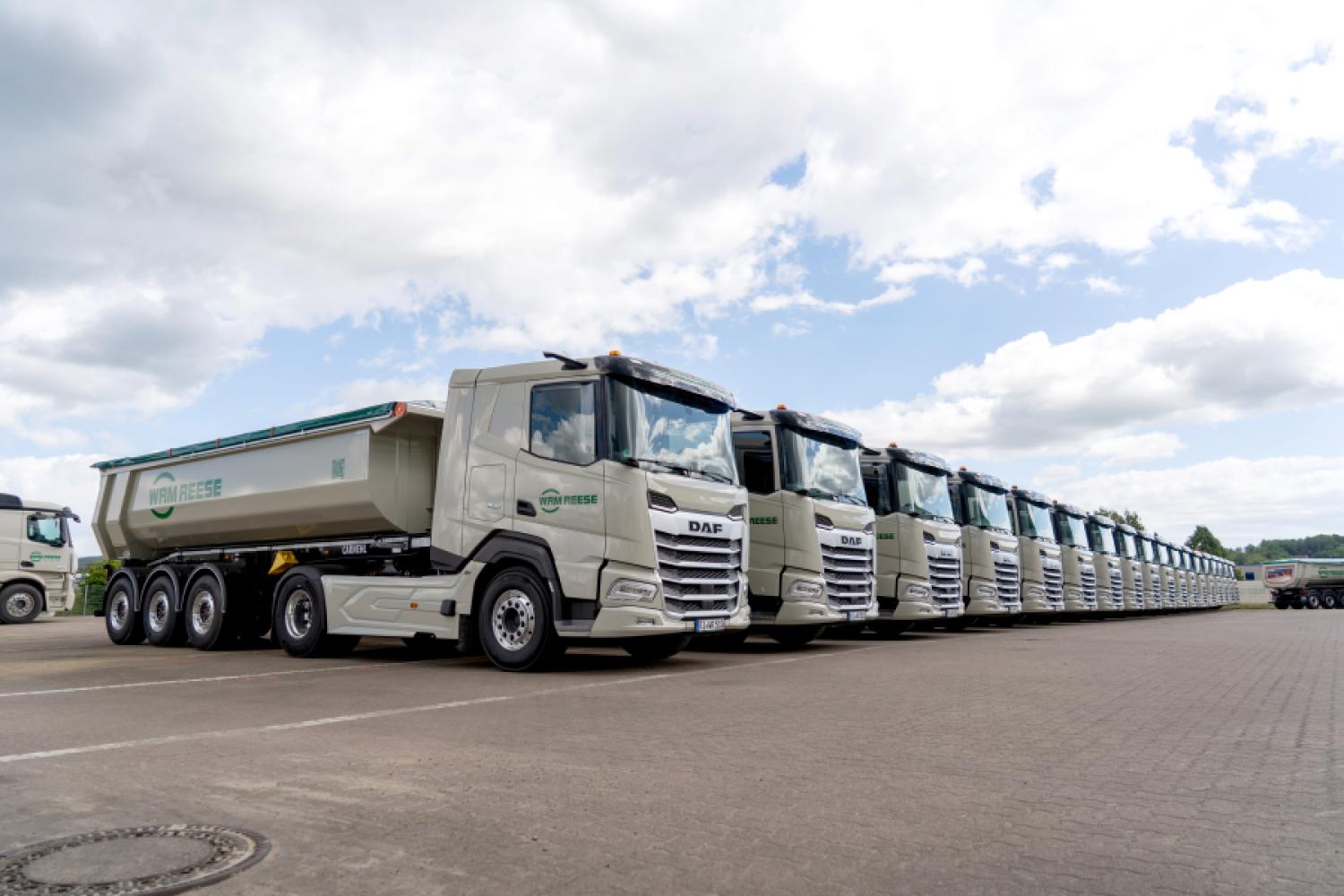In the logistics center in Löhne, autonomous mobile robots (AMR) are being used for the first time to transport large pallets with picked goods in the 100,000 square meter facility. Thomas Saltenbrock, Operations Manager of Hermes Fulfilment in Löhne:
“This relieves our employees and elevates the efficiency of our logistics processes to a new level.”
The location in North Rhine-Westphalia specializes in the logistical handling of large volume assortments weighing more than 31.5 kilograms. This primarily includes furniture, large electrical appliances such as washing machines and refrigerators, as well as upholstered furniture and mattresses. The large items are mostly stored in racks up to 12.40 meters high. Generally, an order consists of several packages. These are mostly picked by hand onto large pallets near the ground.
The loading aids are handed over in the logistics center to the Hermes Installation
Service, which subsequently delivers the ordered goods with two-person handling. For the transfer to the sister company, mainly low-lift pallet trucks operated by employees have been used in the logistics center so far.
Transport like antsIn the future, these vehicles are to be supplemented with self-driving mobile robots from the Austrian manufacturer Melkus Mechatronic. They weigh 222 kilograms and can transport up to 1,200 kilograms of payload. Because they can carry a multiple of their own weight like ants, the devices at Hermes Fulfilment are also called Ants. The lift height is 240 millimeters.
The vehicles move autonomously at an average speed of 1.5 meters per second and navigate using laser scanners mounted on the mast, skids, and sides. To allow the AMR to orient themselves to environmental features, the building infrastructure was measured, mapped, and stored in a cloud-based
control platform. The coordination of transports is managed through a control center.
Avoiding and brakingSensors ensure that the vehicles recognize obstacles and either avoid them or brake in time if there is not enough space to detour. Thomas Saltenbrock:
“Safety is our highest priority in the logistics center.”
Therefore, employees are trained in interaction with the mobile robots and must also adapt to changed right-of-way rules. The self-driving load carriers always have priority — both over conventional industrial trucks and employees who walk on foot in the 100,000 square meter logistics center. The internal traffic concept was adjusted accordingly. Thomas Saltenbrock:
“There are fewer manual transports. The automated material flow ensures smoother logistics operations because the robots move at a consistently low speed.”
This also improves the efficiency of internal processes. Employees who previously handled such transports are relieved and
can take on other, more complex tasks in the logistics center in the future. Thomas Saltenbrock:
“With the deployment of the AMR, we create a modern, motivating work environment with future perspectives in the logistics area. This is an important factor in light of demographic change, noticeable labor shortages, and the rising retirement age.”
25 robots for 1,000 daily transportsHermes Fulfilment has already successfully integrated 23 battery-powered robots. Two more will be added. Together, the devices are expected to complete about 1,000 transports daily and cover approximately 30 kilometers in total. About 20 percent of the transports will continue to be carried out with conventional low-lift pallet trucks. After the pilot phase in the Löhne logistics center, the robotic solution will also be introduced at Hermes Fulfilment's other two-person handling location in the Franconian town of Ansbach, it is said.






